How to install Ubuntu operating system in parallel with Windows 10
Ubuntu is a computer operating system based on Debian GNU / Linux, a popular Linux distribution. The purpose of Ubuntu includes providing a stable operating system, updating it for ordinary users, and focusing on usability and ease of installation. In addition, Ubuntu is free and open source software, which means users are free to run, copy, distribute, research, change and improve the software. This is why IT people or software developers often use this operating system. If you are bored with the Windows operating system or simply want to try out a new operating system, you can install Ubuntu in parallel with Windows. In this article, TipsMake.com will guide you the basic steps to install Ubuntu operating system in parallel with Windows 10. Invite you to follow.

1. Create a blank partition to install Ubuntu
To install Ubuntu in parallel with Windows 10 we need to create a new hard drive partition to accommodate Ubuntu. New partition subscriptions are as follows:
Step 1 : Right-click the ThisPC icon and select Manage

Step 2: In the new window select Disk Management and you will see your hard drives are displayed as Disk 0, Disk 1 as shown below, if your computer has only 1 hard drive, it will show only show Disk 0.

Step 3 : To create a new free partition, right click on the hard drive and select Shrink Volume .

Step 4 : A new window appears, enter the partition capacity you want to split, the number available is the maximum capacity you can split, then click Shrink
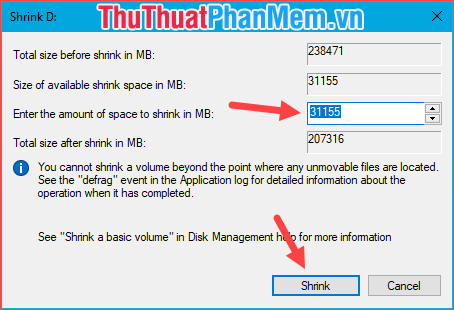
Wait a moment and windows will create us a new partition called Free space and we will proceed to install Ubuntu on this partition.
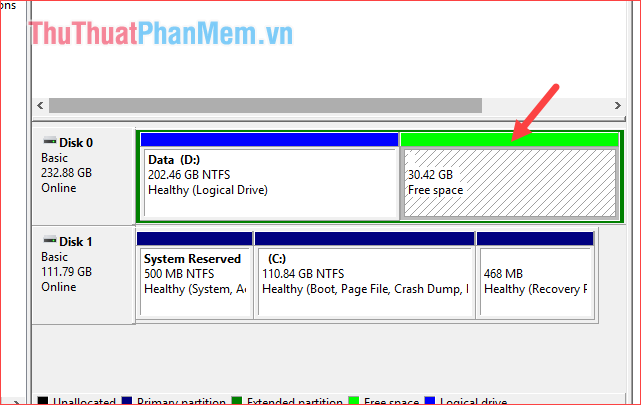
2. Prepare before installing Ubuntu
Similar to when installing windows, to install Ubuntu we need to have the Ubuntu installer ISO file and a 4Gb USB or higher.
- Link to download ISO Ubuntu: https://www.ubuntu.com/download
- Rufus software creates USB boot: https://rufus.akeo.ie
How to create Ubuntu bootable USB as follows:
You plug the USB into the computer, then open the software Rufus and do the following steps:
1 - Select the USB that you connect to the computer to create Boot.
2 - Select the Ubuntu ISO file that you have prepared.
3, 4 - You default to the picture.
5 - Name the USB.
6 - Choose the default FAT32, if the ISO file is larger than 4GB, select NTFS.
7 - Select the default as shown.
8 - Click Start to start creating USB boot.
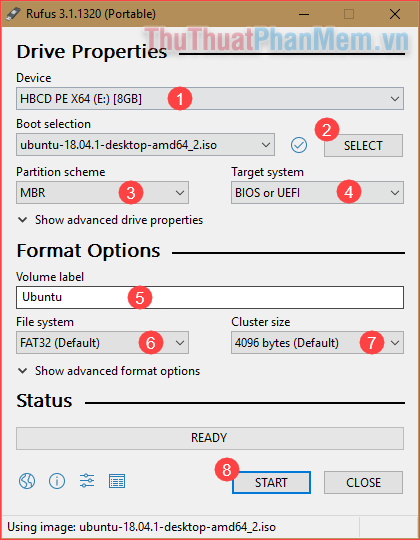
After clicking Start if a message appears, click Yes and OK.
3. Steps to install Ubuntu
Step 1 : You plug the USB boot created above into the computer and then restart. During the reboot process, choose BIOS and select boot from USB or CD.
List of BIOS access keys by mainboard:
- ASRock mainboard - Press the F2 key
- ASUS Mainboard - Press DEL, Print or F10 key .
- GIGABYTE Mainboard - Press the Del key to enter the BIOS Setup Utility.
- Intel Mainboard - Press F2 to enter BIOS Setup Utility.
- MSI (Micro-Star) Mainboard - Press the DEL key to enter the BIOS Setup Utility.
List of BIOS access keys by model:
Laptop SONY VAIO
- To get into the BIOS when restarting the computer you need to press the Vaio Assist key
Laptop HP - COMPAQ
- On some HP models, you will need to press F10 to enter the BIOS.
- To get into BOOT when restarting the computer you need to press and hold the F9 key
ACER Laptop
- To get into BOOT when restarting the computer you need to press and hold the F12 key
- To get into the BIOS when restarting the computer you need to press and hold the F2 key .
ASUS laptop
- To get into the BIOS when restarting the computer you need to press and hold the F2 key
- To get into BOOT when restarting the computer you need to press and hold the ESC key
LENOVO THINKPAD Laptop
- To get into the BIOS when restarting the computer you need to press and hold the F2 key
- To get into BOOT when restarting the computer you need to press and hold the F12 key
DELL Laptop
- To get into the BIOS when restarting the computer you need to press and hold the F2 key
- To get into BOOT when restarting the computer you need to press and hold the F12 key
Step 2 : After booting into USB, we will see the Ubuntu installation interface as shown below:
Here you have 2 options: Try Ubuntu (trial) and Install Ubuntu (install). We will choose Install Ubuntu to install.
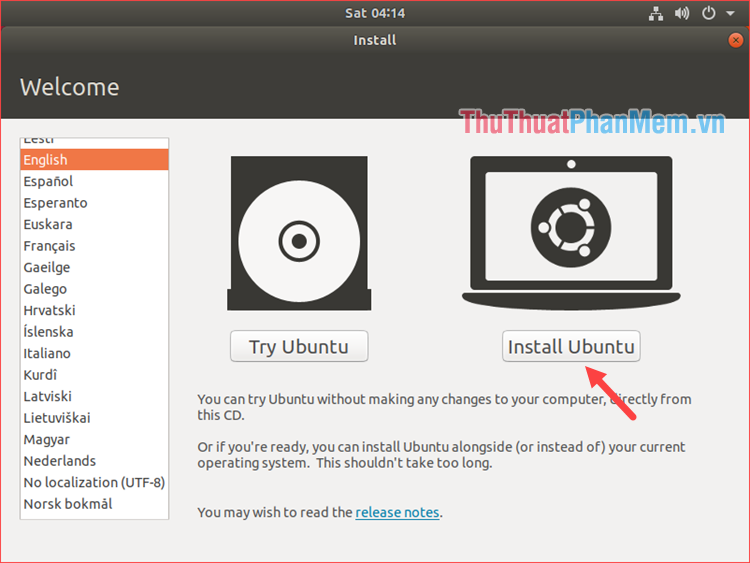
Step 3 : We choose the keyboard language for Ubuntu then click Continue .

Step 4 : You can choose either of the following options:
- Normal installation : Normal installation with full software such as: web browser, utilities, office, games, and media player.
- Minimal installation : shortened installation includes only browser and utilities.
If you want to install quickly, select Minimal, if you want to fully, then select Normal.
Also, the two options under Other options are installing updates and third party software, so you can uncheck to save time during the Ubuntu installation process.
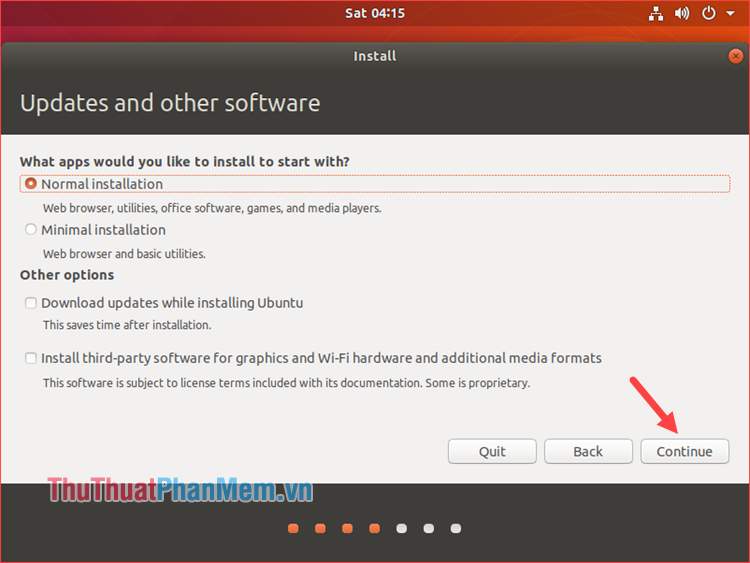
Step 5 : At the Installation Type interface, you will pay attention to 2 options:
- Erase disk and install Ubuntu: This option you need to pay attention, it will wipe all data in the hard drive when installing. Only select when your hard drive no longer has important data. If your computer has Ubuntu installed, you can select this option to install Ubuntu.
- Something else: If you want to install Ubuntu together with windows, you need to Check this option to create an Ubuntu installation partition.
Click continue to continue.
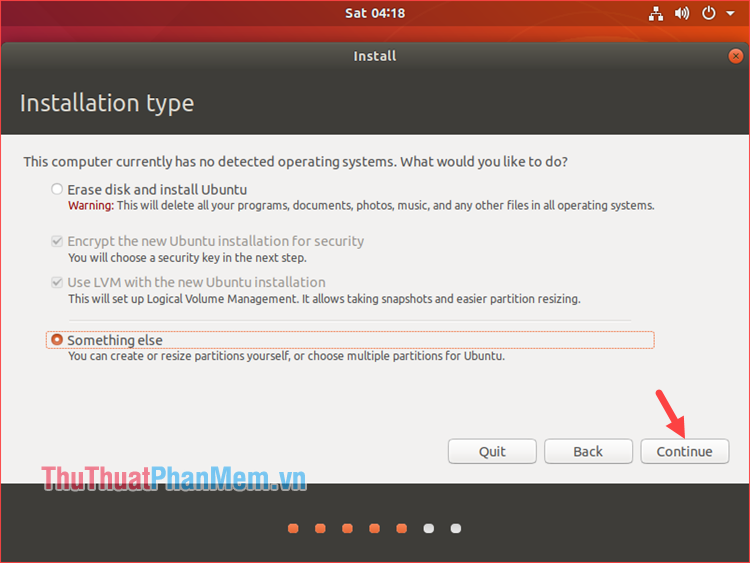
Step 6: After selecting Something else , the interface to create the Ubuntu installation partition appears. You can create the following partition type:
Swap Partition : This is the RAM partition for Ubuntu, you should choose the size of the Swap partition to double the amount of RAM in your computer.
/ Partition : This partition is the repository of Ubuntu data, we will install Ubuntu into this partition.
How to create a partition as follows:
To create a Swap partition, click on the Free Space partition and then click the plus sign.
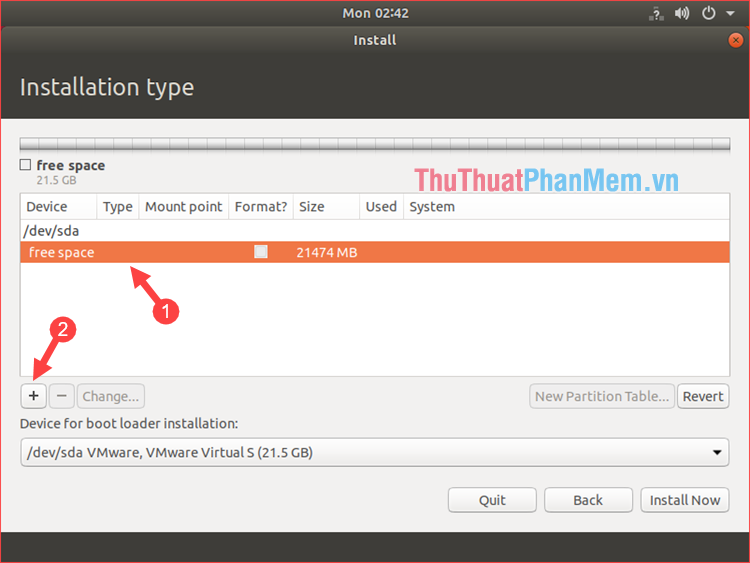
A small window appears, enter the amount of Ram in the Size box, then select the partition type is Logical , the Localtion for the new partition you choose Beginning of this space and the Use as select Swap area then click OK .
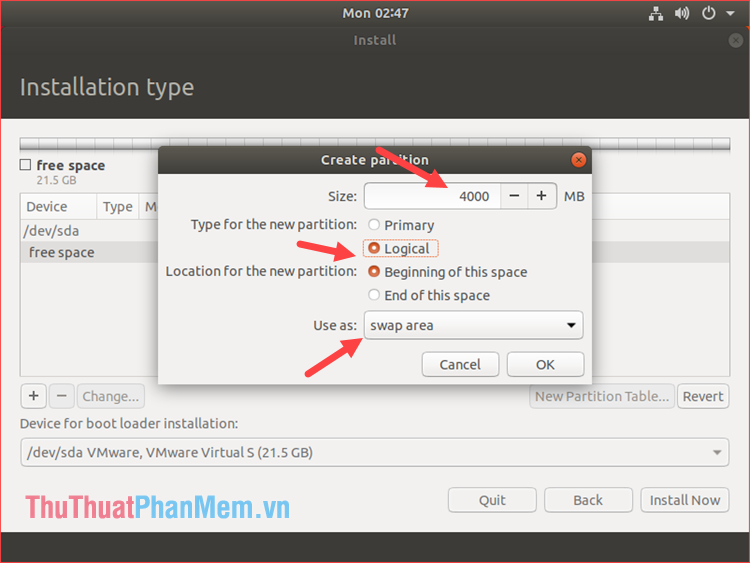
After creating the swap partition, we continue to click on free space and click the plus sign to create the partition /
You choose according to the picture below, Use as you default to Ext4 journaling file system , Mount point you choose /
Finally click OK.
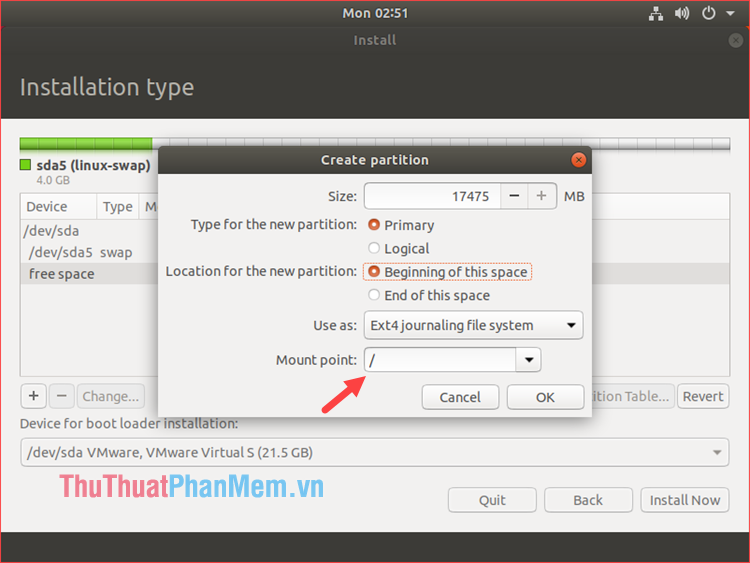
Step 7 : After creating 2 partitions, Swap and /, select the partition / and click Install now to install Ubuntu. If a message appears, click Continue.

Step 8 : Select the Vietnamese time zone, then click Continue:
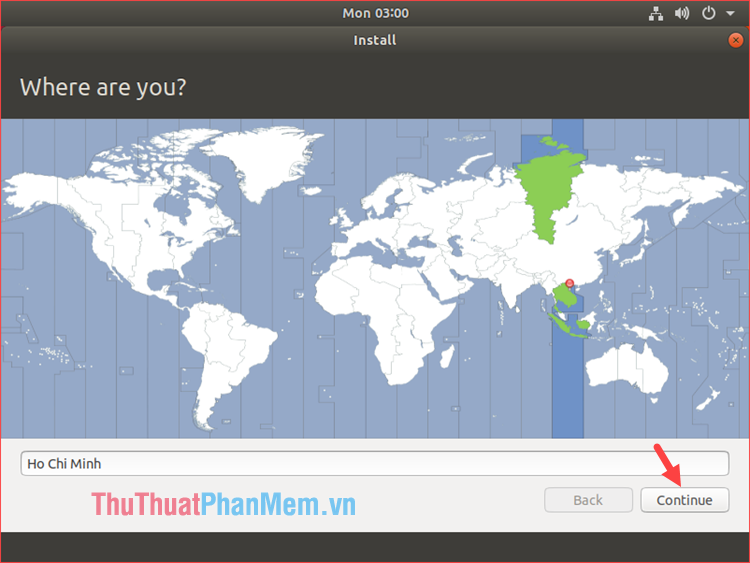
Step 9 : Enter your username and password and click Continue
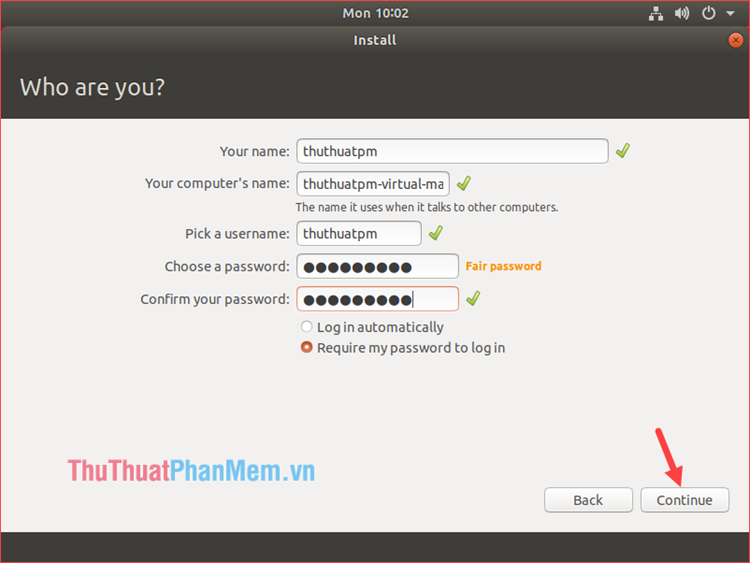
Now our job is to wait for the Ubuntu installation process to complete and reset the computer is done:
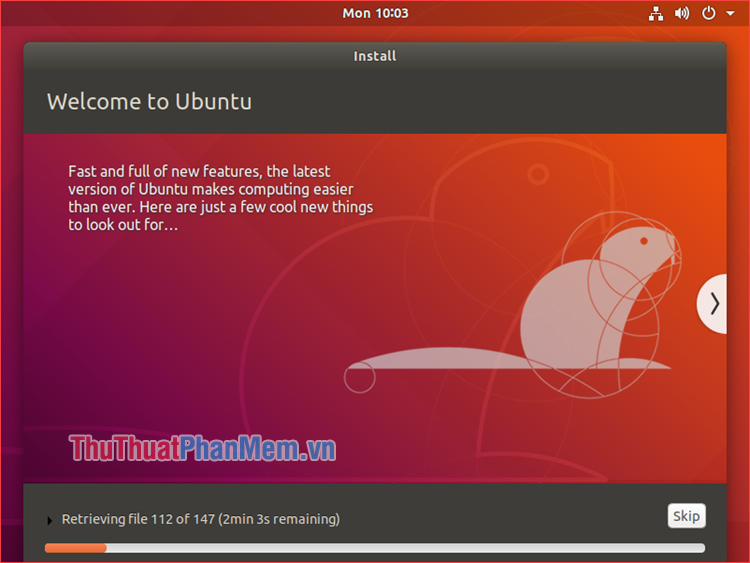
When the computer boots at the boot menu, there will be two options for Ubuntu or Windows, which operating system you want to access, select that operating system. And this is the Desktop interface of Ubuntu operating system:
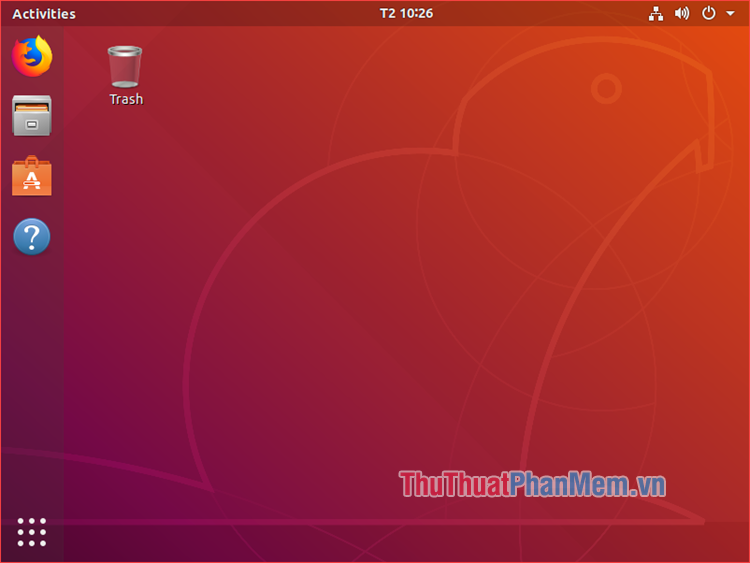
Above is a detailed guide on how to install Ubuntu with Windows 10, hopefully the article will help you know how to install Ubuntu easily. Good luck!
You should read it
- Instructions for installing Ubuntu on VMware Workstation - Part 1
- How to install Ubuntu on a VMware virtual machine
- Instructions to install Windows 10 in parallel with Windows 7
- How to Uninstall Ubuntu Operating System
- How to install dual boot Windows 10 and Windows Server
- Parallel installation of Windows 10 with Windows 7 or 8
- How to Install Ubuntu on VirtualBox
- China developed its own operating system based on Ubuntu
May be interested
- How to Install Ubuntu on VirtualBox
 this wikihow teaches you how to install ubuntu linux on a computer by using virtualbox. virtualbox is a program which allows you to install an operating system without changing your computer's main operating system. open the ubuntu...
this wikihow teaches you how to install ubuntu linux on a computer by using virtualbox. virtualbox is a program which allows you to install an operating system without changing your computer's main operating system. open the ubuntu... - China developed its own operating system based on Ubuntu
 according to slashgear technology site, the chinese government signed with canonical, the company responsible for developing ubuntu, to build an operating system exclusively for the country.
according to slashgear technology site, the chinese government signed with canonical, the company responsible for developing ubuntu, to build an operating system exclusively for the country. - How to Install Windows from Ubuntu
 this article will show you how to install windows 10 on a personal computer (pc) running ubuntu linux. before you begin, make sure you have purchased a windows license and have the product key. if you don't have the windows installation file, don't worry because you can create a usb drive to boot from the downloaded iso image. after installing windows, you can install the easybcd tool that allows you to switch between operating systems at startup.
this article will show you how to install windows 10 on a personal computer (pc) running ubuntu linux. before you begin, make sure you have purchased a windows license and have the product key. if you don't have the windows installation file, don't worry because you can create a usb drive to boot from the downloaded iso image. after installing windows, you can install the easybcd tool that allows you to switch between operating systems at startup. - Ubuntu 18.04 is officially available on Microsoft Store, can run as an application on Windows 10
 currently, the latest ubuntu 18.04 update is available on the microsoft store, users can download and run this linux version as a normal application on windows 10.
currently, the latest ubuntu 18.04 update is available on the microsoft store, users can download and run this linux version as a normal application on windows 10. - How to Install Ubuntu Linux
 this is an article showing how to install ubuntu linux on a windows or mac computer without removing the current operating system.
this is an article showing how to install ubuntu linux on a windows or mac computer without removing the current operating system. - How to Install Ubuntu Server
 this wikihow teaches you how to install ubuntu server on a windows computer. ubuntu server is a free, linux-based server operating system that you can use to host your web services. open the ubuntu server download page. go to...
this wikihow teaches you how to install ubuntu server on a windows computer. ubuntu server is a free, linux-based server operating system that you can use to host your web services. open the ubuntu server download page. go to... - How to Install Ubuntu 13.10
 ubuntu is a kind of linux operating system designed to run on desktop and laptop computers. ubuntu is an open-source program, meaning its code can be accessed and modified by end users. and because it's free, ubuntu is said to be the most...
ubuntu is a kind of linux operating system designed to run on desktop and laptop computers. ubuntu is an open-source program, meaning its code can be accessed and modified by end users. and because it's free, ubuntu is said to be the most... - Install VirtualBox in USB and run the operating system
 what if we could choose to install and bring our chosen operating system into a usb drive?
what if we could choose to install and bring our chosen operating system into a usb drive? - How to Dual Boot Windows 10 and Ubuntu 16.04
 there are many benefits to having multiple operating systems available on your computer. windows is the most popular operating system that runs the most common programs and applications. ubuntu is a linux-based operating system that runs...
there are many benefits to having multiple operating systems available on your computer. windows is the most popular operating system that runs the most common programs and applications. ubuntu is a linux-based operating system that runs... - 7 things Ubuntu does better than Windows
 you may have heard of the linux operating system called ubuntu. if you haven't tried it yet, you may be missing out on some great features.
you may have heard of the linux operating system called ubuntu. if you haven't tried it yet, you may be missing out on some great features.










 What is Clipboard Explain the meaning of Clipboard in Windows
What is Clipboard Explain the meaning of Clipboard in Windows How to release RAM helps the computer run faster
How to release RAM helps the computer run faster What is PowerShell Basic commands in PowerShell
What is PowerShell Basic commands in PowerShell How to enter Safe Mode on Windows 7
How to enter Safe Mode on Windows 7 How to delete cached DNS on the computer using the Flush DNS command
How to delete cached DNS on the computer using the Flush DNS command How to check computer hardware information using AIDA64
How to check computer hardware information using AIDA64